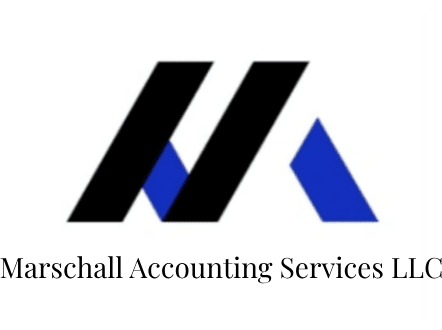By Jessica I. Marschall, CPA
February 9th, 2025
Section 351 of the Internal Revenue Code (IRC) provides a tax benefit for certain transfers of property to a corporation. When property is transferred to a corporation in exchange for stock, Section 351 allows the transaction to be treated as tax-free under specific conditions. This article will explore the key requirements of Section 351, what qualifies as a tax-free exchange, and how these rules affect businesses and their owners.
What is Section 351?
Under IRC Section 351, when a person transfers property to a corporation in exchange for stock, the transfer is tax-deferred, meaning no immediate gain or loss is recognized. This provision allows individuals to contribute assets to a corporation without triggering taxable income, enabling the transfer to happen smoothly and without a tax burden.
Basic Requirements of Section 351
For a transfer of property to qualify for tax-free treatment under Section 351, the following conditions must be met:
- Transfer of Property
- The transferor must contribute property (this includes tangible and intangible assets such as cash, real estate, inventory, and intellectual property).
- Services provided in exchange for stock do not qualify for tax-free treatment under Section 351, so it is essential that the transfer is of property and not services.
- Receipt of Stock
- The transferor must receive stock in return for their property. The stock received must be common or preferred stock in the corporation.
- Stock rights, warrants, or options do not qualify under Section 351.
- Control Requirement
- The control requirement mandates that the transferors must hold at least 80% of the total voting stock and 80% of the total non-voting stock immediately after the exchange.
- This rule ensures that the shareholders or transferors retain control of the corporation after the asset transfer.
- 80% control means that the transferors collectively own at least 80% of the voting power in the corporation. If this threshold is not met, the transaction fails to qualify for tax-free treatment under Section 351.
- Stock Ownership
- The transferors must not receive boot in the transaction. Boot refers to anything other than stock that may be received, such as cash or other property. If the transferor receives boot, the transaction is partially taxable. The boot received will be subject to tax to the extent of the gain realized on the exchange.
Exceptions to Section 351
Though Section 351 allows for a tax-free exchange in many cases, there are some exceptions where tax implications can arise:
- Boot Received
- If a transferor receives boot as part of the exchange, they may be required to recognize a portion of the gain. Boot includes cash, notes, or other property received in addition to stock.
- The gain recognized will be the lesser of the boot received or the gain realized on the entire exchange.
- Transfers to Investment Companies
- Transfers of property to an investment company (i.e., a company that invests primarily in securities or stocks) do not qualify for Section 351’s tax-free treatment. This ensures that tax-free treatment is not abused by creating an investment vehicle that allows the transferor to avoid paying taxes on gains.
- Sale of Stock or Assets After Exchange
- If stock received in the exchange is later sold or disposed of, the gain realized on the sale will be subject to tax. The basis of the stock received in the Section 351 exchange is carried over from the property transferred.
Basis Considerations Under Section 351
When an asset is transferred under Section 351, the basis of the property is generally carried over to the stock received. This means that the transferor’s basis in the transferred property becomes the basis in the stock received.
- If the transferor receives boot in addition to stock, the basis of the stock will be adjusted by the amount of boot received, and the transferor must recognize gain to the extent of the boot.
Example of a Section 351 Transaction
Let’s say Jane Doe, a business owner, decides to incorporate her sole proprietorship. She transfers her business’s assets, valued at $100,000, to a newly formed corporation in exchange for 100% of the stock in the corporation.
- Step 1: Jane transfers assets (property) to the corporation.
- Step 2: Jane receives stock in return, making her the sole shareholder of the corporation.
- Step 3: Jane now owns 100% of the voting stock of the corporation, satisfying the control requirement under Section 351.
- Result: The exchange qualifies for tax-free treatment, and Jane does not have to recognize any gain on the transfer. Her basis in the assets (say $50,000) carries over to her basis in the stock.
Tax Planning Considerations
Section 351 provides a powerful tax deferral strategy for business owners looking to incorporate or reorganize their business. However, there are several factors to consider:
- Basis Tracking: It is important for the transferor to keep accurate records of their basis in the transferred property and the basis in the stock received for future reference.
- Boot Payments: If boot is received, the transaction may become partially taxable, requiring careful planning and consultation with a tax advisor.
- Change of Control: The 80% control requirement ensures that the transferor maintains control of the corporation after the transaction, which should be factored into the overall corporate structure.
Conclusion: The Power of Section 351 for Asset Transfers
Section 351 allows for tax-free treatment of certain asset transfers to corporations, providing a valuable tool for business owners to incorporate or reorganize their business without triggering immediate tax consequences. Understanding the control requirement, the basis considerations, and the impact of boot is crucial to ensure that the transaction qualifies for tax-free treatment.
Before engaging in a Section 351 exchange, it is essential to consult with a tax advisor to ensure compliance with all requirements and to determine the best approach for structuring the transaction in a tax-efficient manner.




